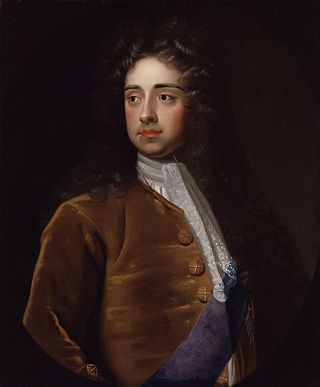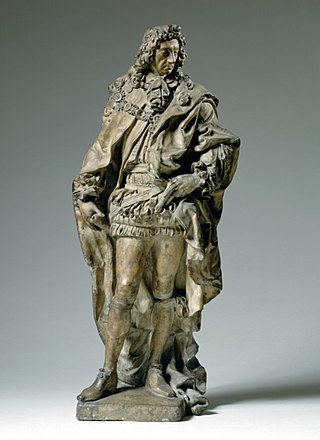
The House of Tudor was a dynasty of largely Welsh and English origin that held the English throne from 1485 to 1603. They descended from the Tudors of Penmynydd and Catherine of France. Tudor monarchs ruled the Kingdom of England and its realms, including their ancestral Wales and the Lordship of Ireland for 118 years with five monarchs: Henry VII, Henry VIII, Edward VI, Mary I and Elizabeth I. The Tudors succeeded the House of Plantagenet as rulers of the Kingdom of England, and were succeeded by the House of Stuart. The first Tudor monarch, Henry VII of England, descended through his mother from a legitimised branch of the English royal House of Lancaster, a cadet house of the Plantagenets. The Tudor family rose to power and started the Tudor period in the wake of the Wars of the Roses (1455–1487), which left the main House of Lancaster extinct in the male line.

Lawrence Sheriff was a Tudor merchant and benefactor, who was notable for being grocer to Queen Elizabeth I, and for creating Rugby School through an endowment in his will.

The Worshipful Company of Grocers is one of the 111 Livery Companies of the City of London and ranks second in order of precedence. The Grocers' Company was established in 1345 for merchants occupied in the trade of grocer and is one of the Great Twelve City Livery Companies.

Charles Talbot, 1st Duke of Shrewsbury, KG, PC was an English peer and politician who was part of the Immortal Seven group which invited William of Orange to depose King James II of England during the Glorious Revolution. He was appointed to several minor roles before the revolution, but came to prominence as a member of William's government. Born to Roman Catholic parents, he remained in that faith until 1679 when—during the time of the Popish Plot and following the advice of the divine John Tillotson—he converted to the Church of England. Shrewsbury took his seat in the House of Lords in 1680 and three years later was appointed Gentleman-Extraordinary of the Bedchamber, suggesting he was in favour at the court of Charles II.
Edward Hall was an English lawyer and historian, best known for his The Union of the Two Noble and Illustre Families of Lancastre and Yorke—commonly known as Hall's Chronicle—first published in 1548. He was also several times a member of the Parliament of England.
Sir William Laxton was a Lord Mayor of London during the reign of Henry VIII, and eight times Master of the Worshipful Company of Grocers. He is the founder of Oundle School.

Dame Alice Owen's School is an 11–18 mixed, partially selective secondary school and sixth form with academy status in Potters Bar, Hertfordshire, England. It is part of the Dame Alice Owen's Foundation; its trustees are the Worshipful Company of Brewers.

Wrington is a village and a civil and ecclesiastical parish on the north slopes of the Mendip Hills in North Somerset, England. Both include nearby Redhill. Wrington lies in the valley of the Congresbury Yeo river, about 9 miles (14 km) east of Weston-super-Mare and 3 miles (4.8 km) south-east of Yatton. Its population of 2,633 at the 2011 Census was estimated in 2019 to be 2,759.

The Henry Box School is a secondary school with academy status located in Witney in Oxfordshire, England. The school has a catchment area of the town of Witney and many surrounding villages such as Ducklington and Aston. It has approximately 1400 students, aged 11–18. The Latin motto of the Henry Box School is Studio Floremus, which can be translated as 'By study we flourish'. In the school's most recent inspection, Ofsted judged the school to be "good".
Sir Thomas Allen, 1st Baronet also spelt Aleyn or Alleyn, was an English politician and grocer.

Sir John Cutler, 1st Baronet (1603–1693) was an English grocer, financier and Member of Parliament.

Edward North, 1st Baron North was an English peer and politician. He was the Clerk of the Parliaments 1531–1540 and Lord Lieutenant of Cambridgeshire 1557–1564. A successful lawyer, he was created the first Baron North, giving him a seat in the House of Lords.

Sir Peter Probie was an English politician who sat in the House of Commons at times between 1593 and 1598. He was Lord Mayor of London in 1622.
Thomas Turgis was an English politician who sat in the House of Commons between 1659 and 1704, eventually in 1701 becoming the Father of the House, as the member with the longest unbroken service.
Henry Dunster was an English merchant and politician who sat in the House of Commons from 1660 to 1679.
John Brayne was a member of the Worshipful Company of Grocers. He built the Red Lion playhouse, and financed, with his brother-in-law, James Burbage, the building of the Theatre in Shoreditch, in which he was to have had a half interest. He also leased the George Inn in Whitechapel with a friend, Robert Miles. The latter two ventures, particularly the financing of the Theatre, bankrupted him, and he fell out with both James Burbage and Robert Miles. It was suspected that his death in 1586 was caused by blows received during an altercation with Miles. His widow, Margaret, backed financially by Miles, was involved in litigation with Burbage over Brayne's half interest in the Theatre until her own death in 1593.

Alice Mary Longfellow was a philanthropist, preservationist, and the eldest surviving daughter of the American poet Henry Wadsworth Longfellow. She is best known as "grave Alice" from her father's poem "The Children's Hour".

Artus Quellinus III, known in England as Arnold Quellin was a Flemish sculptor who after training in Antwerp was mainly active in London. Here he worked in partnership with the English sculptor Grinling Gibbons on some commissions. Some of the works created during their partnership cannot with certainty be attributed to Quellinus or Gibbons. The drop in quality of the large-scale figurative works in the workshop of Gibbons following the early death of Quellinus has been seen as evidence of this.

Sandywell Park is an Jacobean Georgian manor house, five miles east of Cheltenham in Gloucestershire, England. Built in 1704 by Henry Brett, it was extended a few times over the 18th century. In the mid-eighteenth century the Sandywell Park estate acquired the Whittington Court building. Sandywell Park is today a Grade II* listed building.

Sir George Barne was an English businessman in the City of London who was active in developing new trading links with Russia, West Africa and North America, far outside what had been traditional English trading patterns. Created a knight in 1553, he served as Sheriff of London and Lord Mayor of London. He was the father of Sir George Barne and grandfather of Sir William Barne. Nicholas Culverwell was probably a nephew.














